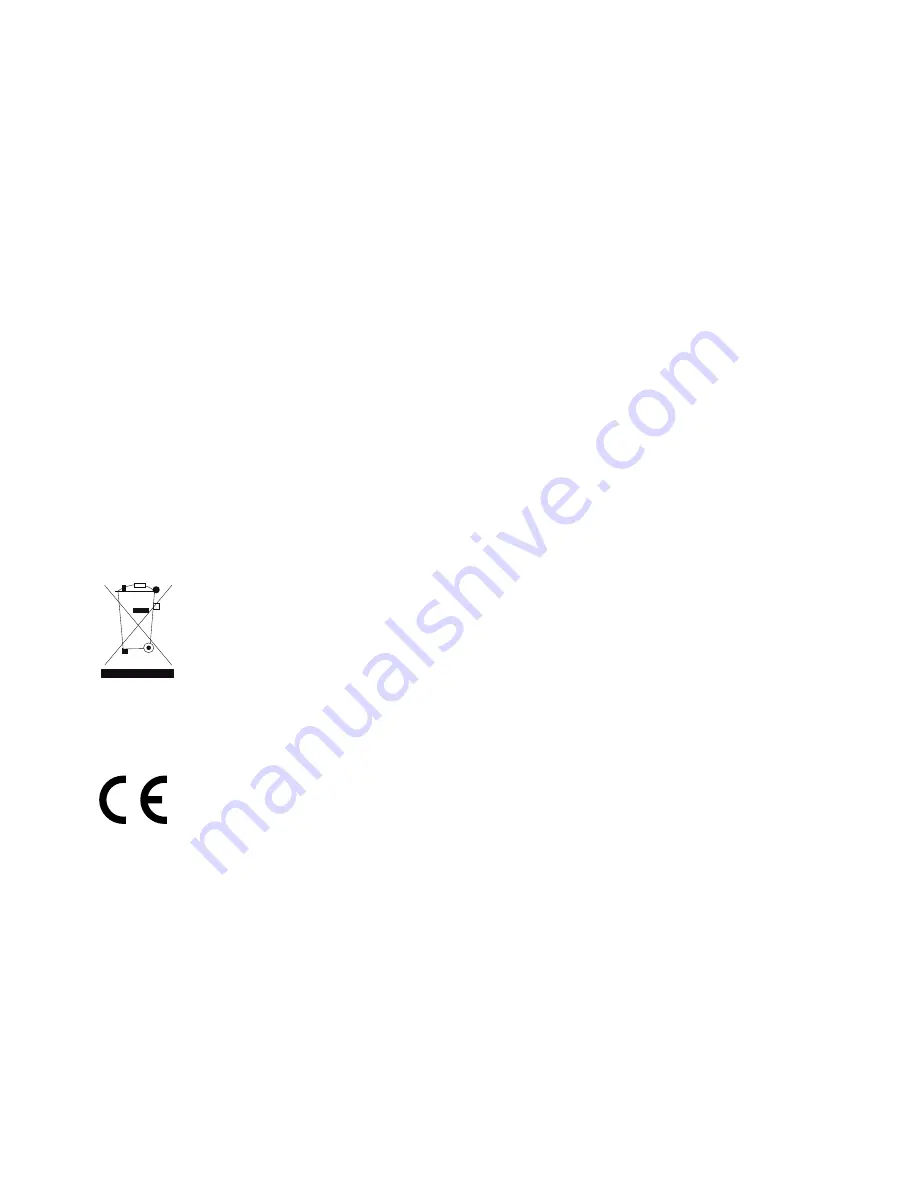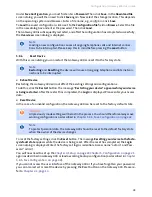
Legal Notices | Gateway 400
User Guide
53
7.1
Disposal
According to the Electrical and Electronic Equipment Act, owners of old devices are
obliged to dispose of old electrical and electronic equipment in a separate waste con-
tainer. Please help with and contribute to environmental protection by not disposing
the old device and accessories in the regular household waste. Take the old device and
accessories to a collection point provided by your local public waste authorities (e.g., a
recycling center).
7.2
CE Declaration of Conformity
This product complies with the R&TTE Directive 1999/5/EC.
The conformity of the product with the applicable standards and norms is confirmed by
the CE mark.
The EC declaration of conformity can viewed on the Internet at
www.zyxel.de
on the appropriate
product page.
16. Limitation of Liability.
IN NO EVENT UNLESS REQUIRED BY APPLICABLE LAW OR AGREED TO IN
WRITING WILL ANY COPYRIGHT HOLDER, OR ANY OTHER PARTY WHO
MODIFIES AND/OR CONVEYS THE PROGRAM AS PERMITTED ABOVE, BE
LIABLE TO YOU FOR DAMAGES, INCLUDING ANY GENERAL, SPECIAL, IN-
CIDENTAL OR CONSEQUENTIAL DAMAGES ARISING OUT OF THE USE OR
INABILITY TO USE THE PROGRAM (INCLUDING BUT NOT LIMITED TO LOSS
OF DATA OR DATA BEING RENDERED INACCURATE OR LOSSES SUS-
TAINED BY YOU OR THIRD PARTIES OR A FAILURE OF THE PROGRAM TO
OPERATE WITH ANY OTHER PROGRAMS), EVEN IF SUCH HOLDER OR
OTHER PARTY HAS BEEN ADVISED OF THE POSSIBILITY OF SUCH DAM-
AGES.
17. Interpretation of Sections 15 and 16.
If the disclaimer of warranty and limitation of liability provided above cannot be giv-
en local legal effect according to their terms, reviewing courts shall apply local law
that most closely approximates an absolute waiver of all civil liability in connection
with the Program, unless a warranty or assumption of liability accompanies a copy
of the Program in return for a fee.
END OF TERMS AND CONDITIONS
How to Apply These Terms to Your New Programs
If you develop a new program, and you want it to be of the greatest possible use
to the public, the best way to achieve this is to make it free software which every-
one can redistribute and change under these terms.
To do so, attach the following notices to the program. It is safest to attach them to
the start of each source file to most effectively state the exclusion of warranty; and
each file should have at least the “copyright” line and a pointer to where the full
notice is found.
<one line to give the program’s name and a brief idea of what it does.>
Copyright (C) <year> <name of author>
This program is free software: you can redistribute it and/or modify it under the
terms of the GNU General Public License as published by the Free Software
Foundation, either version 3 of the License, or (at your option) any later version.
This program is distributed in the hope that it will be useful, but WITHOUT ANY
WARRANTY; without even the implied warranty of MERCHANTABILITY or FIT-
NESS FOR A PARTICULAR PURPOSE. See the GNU General Public License
for more details. You should have received a copy of the GNU General Public Li-
cense along with this program. If not, see <http://www.gnu.org/licenses/>.
Also add information on how to contact you by electronic and paper mail.
If the program does terminal interaction, make it output a short notice like this
when it starts in an interactive mode:
<program> Copyright (C) <year> <name of author>
This program comes with ABSOLUTELY NO WARRANTY; for details type
`show w’.
This is free software, and you are welcome to redistribute it under certain con-
ditions; type `show c’ for details.
The hypothetical commands `show w’ and `show c’ should show the appropriate
parts of the General Public License. Of course, your program’s commands might
be different; for a GUI interface, you would use an “about box”.
You should also get your employer (if you work as a programmer) or school, if any,
to sign a “copyright disclaimer” for the program, if necessary. For more information
on this, and how to apply and follow the GNU GPL, see
http://www.gnu.org/licenses/
The GNU General Public License does not permit incorporating your program into
proprietary programs. If your program is a subroutine library, you may consider it
more useful to permit linking proprietary applications with the library. If this is what
you want to do, use the GNU Lesser General Public License instead of this Li-
cense. But first, please read
http://www.gnu.org/philosophy/why-not-lgpl.html.
Summary of Contents for 400
Page 1: ...User Guide Gateway 400 ...
Page 2: ......
Page 7: ...7 11 Index 65 ...
Page 8: ...8 ...
Page 54: ...Gateway 400 User Guide Legal Notices 54 ...
Page 58: ...Gateway 400 User Guide Passwords 58 Note More Notes ...
Page 67: ......
















































